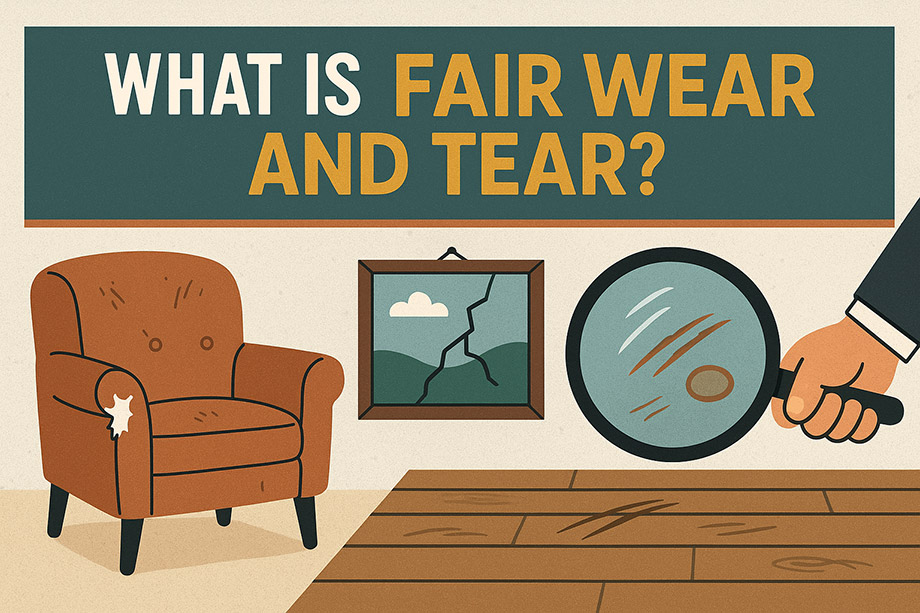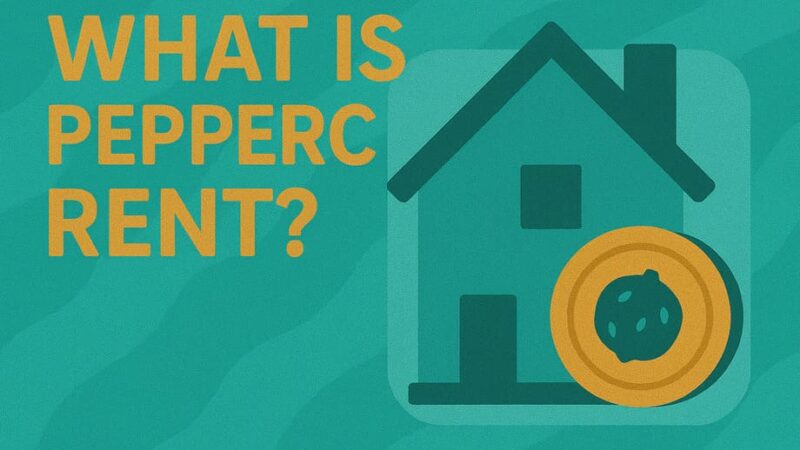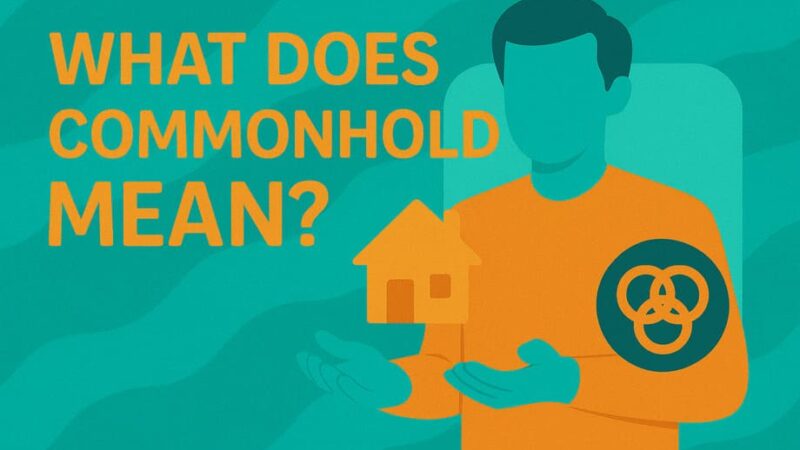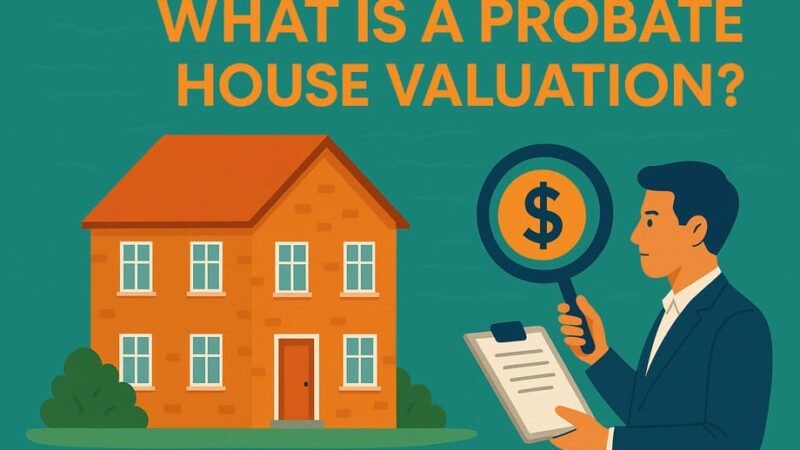What is fair wear and tear

The phrase “fair wear and tear” appears in virtually every tenancy agreement in the UK, yet it remains one of the most misunderstood and disputed concepts in the rental sector. Whether you’re a tenant worried about getting your deposit back or a landlord trying to determine what constitutes reasonable property condition, understanding this crucial concept can save you both money and stress.
This comprehensive guide will demystify fair wear and tear, providing practical examples, real-world scenarios, and expert insights to help you navigate this complex area with confidence.
The Foundation: What Fair Wear and Tear Actually Means
Fair wear and tear is fundamentally about the natural aging process that occurs when people live in a property. The Government’s model tenancy agreement defines it as “reasonable use of the premises by the tenant and the operation of natural forces”, while Lord Denning famously established in the 1950s that tenants must take proper care but are not liable for disrepair through “fair wear and tear or lapse of time”.
Think of it this way: if you buy a new car and drive it for two years, you wouldn’t expect it to look showroom-fresh when you sell it. The same principle applies to rental properties. Normal living inevitably causes some deterioration, and this natural aging shouldn’t be the tenant’s financial responsibility.
The Legal Framework
While there’s no precise legal definition of fair wear and tear, it’s built into UK housing law as an implied term in every tenancy agreement. This means even if it’s not explicitly mentioned in your contract, it still applies. The concept protects tenants from unreasonable charges while ensuring landlords aren’t left covering damage that goes beyond normal use.
The Science of Deterioration: How Properties Age
Understanding how and why properties deteriorate helps clarify what’s reasonable to expect. Several factors influence the rate of wear and tear:
Environmental Factors
- Sunlight: UV rays naturally fade fabrics, carpets, and paintwork over time
- Temperature fluctuations: Cause materials to expand and contract, leading to minor cracks and settling
- Humidity: Affects wood, causing doors to stick or gaps to appear
- General aging: All materials have natural lifespans and will eventually need replacement
Usage Patterns
- Foot traffic: High-traffic areas naturally show more wear
- Daily activities: Cooking, cleaning, and general living all contribute to gradual deterioration
- Number of occupants: More people typically means accelerated wear
- Lifestyle factors: Families with children or pets may experience different wear patterns
Distinguishing Between Wear and Damage: The Critical Difference
The key to understanding fair wear and tear lies in distinguishing between natural deterioration and actual damage. This distinction determines who pays for repairs or replacements at the end of a tenancy.
Fair Wear and Tear: What’s Expected
Paintwork and Walls:
- Slight fading of paint colors, especially in sunny rooms
- Minor scuff marks at light switch height or around door handles
- Small nail holes from hanging pictures (within reason)
- Hairline cracks that appear due to property settling
Flooring:
- Gradual carpet pile compression in walkways
- Minor scratches on hardwood floors from normal furniture movement
- Slight discoloration of carpets from general use
- Worn edges on carpets or vinyl flooring
Kitchen and Bathroom:
- Natural limescale buildup despite regular cleaning
- Minor scratches on worktops from normal food preparation
- Worn tap finishes from regular use
- Slight discoloration of grout over time
Fixtures and Fittings:
- Door handles becoming loose through regular use
- Minor wear on window mechanisms
- Gradual dimming of light bulbs
- Natural aging of appliances within their expected lifespan
Damage: What Goes Beyond Normal Use
Clear Damage Examples:
- Holes punched in walls or doors
- Carpet stains that can’t be professionally cleaned
- Burns on surfaces from cigarettes or cooking accidents
- Broken windows, tiles, or fixtures
- Excessive pet damage (beyond normal pet wear)
- Unapproved alterations or decorations
The Gray Areas: Some situations require careful consideration of circumstances:
- Heavy staining: Could be damage if caused by spills not cleaned promptly, or wear if from gradual use over many years
- Excessive dirt: While cleanliness isn’t covered by fair wear and tear, determining “excessive” can be subjective
- Appliance failures: May be wear if the item has reached its natural lifespan, or damage if caused by misuse
The Five-Factor Assessment: A Comprehensive Evaluation Framework
When determining what constitutes fair wear and tear, property professionals use a five-factor assessment model that considers multiple variables:
1. Age of the Item or Area
The age of fixtures, fittings, and decorations is perhaps the most important factor. An older item will attract a higher level of wear and tear and should be assessed accordingly.
Practical Application:
- A carpet installed five years ago will naturally show more wear than one installed six months ago
- Paint applied at the start of a three-year tenancy will have faded more than paint applied last month
- Appliances near the end of their expected lifespan shouldn’t be treated as new items
Documentation Tip: Landlords should keep invoices and installation dates for all improvements and replacements to establish accurate timelines.
2. Quality and Expected Lifespan
The initial quality of materials and fittings significantly impacts their expected lifespan and wear resistance.
Quality Considerations:
- Budget materials: May show wear more quickly but also have lower replacement costs
- Premium materials: Generally last longer but command higher replacement prices
- Builder-grade vs. luxury: Different quality levels have different wear expectations
Expected Lifespans in Rental Properties:
- Carpets: 5-10 years depending on quality and traffic
- Interior paint: 3-5 years in high-use areas, longer in bedrooms
- Kitchen appliances: 7-15 years depending on type and quality
- Bathroom suites: 15-20 years with proper maintenance
3. Property Type and Usage Intensity
The intended use and actual occupancy of a property dramatically affects wear patterns.
Occupancy Factors:
- Student accommodation: Typically experiences higher wear due to lifestyle and occupancy patterns
- Family homes: May show different wear patterns, especially in homes with young children
- Professional lets: Often maintained to higher standards with more careful use
- Short-term vs. long-term lets: Different usage patterns create different wear expectations
Practical Examples:
- A six-bedroom student house will naturally experience more wear than a one-bedroom professional flat
- Properties with pets require different wear and tear considerations
- High-occupancy properties may show accelerated wear in common areas
4. Length of Tenancy
The duration a tenant has lived in a property directly correlates with expected wear levels.
Time-Based Considerations:
- Short tenancies (under 1 year): Minimal wear expected
- Medium tenancies (1-3 years): Moderate wear becomes reasonable
- Long tenancies (3+ years): Higher levels of wear are acceptable
Calculation Impact: If a carpet was expected to last 8 years and a tenant lived in the property for 4 years, they’ve used approximately 50% of its lifespan through normal use.
5. Specific Tenant Circumstances
Individual tenant situations can influence reasonable wear expectations.
Relevant Circumstances:
- Number of occupants: More people typically means more wear
- Presence of pets: Additional considerations for pet-related wear
- Tenant lifestyle: Shift workers, home-based businesses, or frequent entertaining may create different wear patterns
- Tenant care standards: Some tenants naturally maintain properties better than others
Practical Examples: Real-World Scenarios
Understanding fair wear and tear becomes clearer through concrete examples that illustrate the principles in action.
Scenario 1: The Faded Living Room
Situation: After a three-year tenancy, the living room walls have noticeably faded, particularly around the large south-facing window. The original bright yellow paint now appears much paler.
Assessment: This is clear fair wear and tear. Sun damage to paintwork is a natural process that occurs regardless of tenant behavior. The three-year timeframe makes some fading entirely reasonable.
Outcome: The tenant wouldn’t be charged for repainting. If the landlord chooses to repaint for the next tenant, this is a landlord expense.
Scenario 2: The Stained Carpet Dilemma
Situation: A carpet in a rental property has several stains after an 18-month tenancy. Some appear to be from spilled drinks, while others seem to be general traffic patterns and gradual soiling.
Assessment: This requires careful evaluation. Traffic patterns and gradual soiling over 18 months could be fair wear and tear. However, specific stains from spills that weren’t promptly cleaned might constitute damage.
Outcome: A professional carpet clean might be appropriate, with costs potentially shared if some staining is clearly damage while other issues are normal wear.
Scenario 3: The Kitchen Worktop Scratches
Situation: Kitchen worktops show numerous small scratches after a two-year tenancy with a family of four who cooked regularly.
Assessment: Minor scratches from normal food preparation (cutting vegetables, moving appliances, daily cooking) are expected wear and tear. However, deep gouges or burns would constitute damage.
Outcome: Light scratches from normal cooking wouldn’t warrant charges. The family size and cooking frequency support the wear and tear assessment.
Scenario 4: The Broken Bathroom Tile
Situation: A single bathroom tile is cracked after a one-year tenancy. The tenant claims it happened when a heavy shampoo bottle fell from the bathroom shelf.
Assessment: While accidents happen, this constitutes damage rather than wear and tear. Tiles don’t naturally crack through normal use.
Outcome: The tenant would typically be responsible for the repair cost, though the amount should reflect just the damaged tile plus reasonable labor, not retiling the entire bathroom.
The Betterment Principle: Avoiding Unfair Charges
Betterment occurs when compensation is awarded that would leave the landlord in a better position than before, at the tenant’s expense. This principle protects tenants from paying for improvements beyond the original standard.
Common Betterment Issues
Carpet Replacement: If a 7-year-old carpet needs replacing due to damage, charging the tenant the full cost of a new carpet would constitute betterment. The charge should reflect the carpet’s remaining value, not the full replacement cost.
Professional vs. Domestic Cleaning: If a property was only domestically clean at the start, claiming for professional cleaning would amount to betterment.
Upgrade During Repairs: Installing higher-quality fixtures when repairing damage should not be charged to the tenant unless they specifically requested or caused the need for such upgrades.
Calculating Fair Deductions
When damage does warrant a charge, the calculation should account for:
- Remaining lifespan: What percentage of the item’s expected life remained?
- Original quality: Replacement should be like-for-like, not an upgrade
- Proportional responsibility: Was the damage entirely the tenant’s fault?
Example Calculation:
- Carpet cost: £1,000 when new
- Expected lifespan: 8 years
- Damage occurred: After 6 years
- Remaining value: 25% (2 years ÷ 8 years)
- Fair charge: Maximum £250 (not £1,000)
Cleanliness vs. Condition: An Important Distinction
A very important rule is that fair wear and tear only applies to the ‘condition’ and not the ‘standard of cleaning’. This distinction is crucial for both landlords and tenants.
Cleanliness Standards
Tenant Obligations:
- Properties must be returned to the same cleanliness standard as at the start of the tenancy
- General dirt and grime from daily living must be cleaned by the tenant
- Professional cleaning may be required if specified in the tenancy agreement
Not Covered by Fair Wear and Tear:
- Kitchen grease buildup
- Bathroom soap scum and grime
- Dirty carpets (as opposed to worn carpets)
- Dusty surfaces and fixtures
Condition Issues
Covered by Fair Wear and Tear:
- Gradual discoloration despite regular cleaning
- Natural wear patterns on surfaces
- Age-related deterioration of materials
- Normal settling and minor structural movement
Documentation: Building Your Case
Whether you’re a landlord or tenant, proper documentation is essential for fair wear and tear assessments.
For Landlords: Essential Records
Inventory and Check-In Reports:
- Detailed photographic evidence of property condition at the start
- Written descriptions of all fixtures, fittings, and decorations
- Professional inventory services provide stronger evidence
Maintenance Records:
- Keep all invoices for improvements and repairs
- Document dates of installation or replacement
- Maintain records of routine maintenance and inspections
Regular Inspections:
- Conduct periodic property inspections (with proper notice)
- Document any changes in condition
- Address maintenance issues promptly to prevent deterioration
For Tenants: Protecting Yourself
Move-In Documentation:
- Take extensive photos or video of the property condition
- Note any existing damage or wear in writing
- Ensure the landlord signs off on the inventory
During the Tenancy:
- Report maintenance issues promptly in writing
- Keep records of all communications with the landlord
- Take care to prevent damage while accepting normal wear
Move-Out Preparation:
- Clean the property thoroughly to match move-in standards
- Take extensive photos to show property condition
- Compare with move-in documentation to identify any deterioration
Prevention Strategies: Minimizing Disputes
The best approach to fair wear and tear issues is preventing disputes from arising in the first place.
For Landlords
Property Preparation:
- Use quality materials that will withstand normal wear
- Provide clear maintenance instructions to tenants
- Address any existing issues before new tenancies begin
Clear Communication:
- Explain expectations about property care in writing
- Provide guidance on reporting maintenance issues
- Build positive relationships with tenants through responsive service
Regular Maintenance:
- Don’t defer necessary maintenance and blame tenants later
- Address issues promptly to prevent escalation
- Keep properties in good condition to minimize wear acceleration
For Tenants
Proactive Care:
- Report issues promptly rather than letting them worsen
- Follow any care instructions provided by the landlord
- Maintain the property as if it were your own
Good Communication:
- Keep landlords informed of any concerns
- Respond positively to reasonable inspection requests
- Document all maintenance requests and responses
Understanding Expectations:
- Know your responsibilities under the tenancy agreement
- Understand the difference between wear and damage
- Take reasonable care to prevent avoidable damage
Dispute Resolution: When Disagreements Arise
Despite best efforts, disputes over fair wear and tear do sometimes occur. Understanding the resolution process can help achieve fair outcomes.
Initial Negotiation
Step 1: Review the Evidence
- Compare move-in and move-out documentation
- Consider all relevant factors (age, quality, tenancy length, etc.)
- Calculate fair charges avoiding betterment
Step 2: Open Dialogue
- Discuss disagreements professionally and objectively
- Listen to the other party’s perspective
- Seek mutually acceptable solutions
Step 3: Written Proposals
- Provide detailed breakdowns showing exactly what was considered and how amounts were calculated
- Include supporting evidence (invoices, photos, professional assessments)
- Allow reasonable time for consideration and response
Formal Resolution
If negotiation fails, formal dispute resolution services are available:
- All three government-approved schemes offer free dispute resolution
- Independent adjudicators review evidence and make binding decisions
- Process typically takes 4-6 weeks from submission
Alternative Dispute Resolution:
- Mediation services can help parties reach agreement
- Less formal than adjudication but requires both parties’ consent
- Often faster and less stressful than formal proceedings
Court Proceedings:
- Should be a last resort due to time and cost
- May be necessary for high-value disputes or complex cases
- Legal advice recommended for court proceedings
Future Trends: How Fair Wear and Tear is Evolving
The concept of fair wear and tear continues to evolve with changing rental markets, new materials, and societal expectations.
Technology Impact
Smart Home Devices: As properties increasingly include smart thermostats, security systems, and appliances, questions arise about technology wear and obsolescence.
Virtual Inspections: Digital documentation and virtual reality inspections are becoming more sophisticated, potentially providing better evidence for wear and tear assessments.
Regulatory Changes
Proposed Legislation: Changes to tenancy law may affect how fair wear and tear is assessed and applied, particularly regarding longer-term tenancies and rent controls.
Industry Standards: Professional bodies are developing more detailed guidance on wear and tear assessments, promoting consistency across the sector.
Sustainability Considerations
Longer-Lasting Materials: Increased focus on sustainability may lead to higher-quality, longer-lasting materials becoming standard, potentially extending expected lifespans.
Environmental Factors: Climate change and extreme weather events may influence how “natural forces” are understood in fair wear and tear assessments.
Best Practices Summary
Universal Principles
Fairness and Reasonableness: All assessments should be based on objective evidence and reasonable expectations, considering all relevant circumstances.
Clear Documentation: Comprehensive records and evidence are essential for fair assessments and dispute resolution.
Professional Standards: Both landlords and tenants benefit from approaching fair wear and tear issues professionally and objectively.
Open Communication: Many disputes can be avoided through clear communication and mutual understanding of expectations.
Key Takeaways for Tenants
- Understand that normal living will cause some wear, and you’re not responsible for this
- Take care of the property, but don’t worry about normal aging and minor wear
- Document everything at move-in and move-out
- Report maintenance issues promptly
- Clean thoroughly but understand that cleaning doesn’t prevent fair wear and tear
Key Takeaways for Landlords
- Factor normal wear and tear into your business planning
- Use quality materials appropriate for rental properties
- Maintain properties properly and don’t defer necessary maintenance
- Be fair and reasonable in assessments, avoiding betterment
- Build good relationships with tenants through professional service
Conclusion: Achieving Balance and Fairness
Fair wear and tear represents the balance at the heart of successful rental relationships. It recognizes that properties naturally age through normal use while ensuring tenants aren’t responsible for this inevitable process. Understanding this concept thoroughly—including how to assess it, document it, and apply it fairly—benefits everyone in the rental sector.
For tenants, this knowledge provides confidence that normal living won’t result in unfair charges, while also clarifying genuine responsibilities for property care. For landlords, it offers a framework for fair assessment and helps maintain positive tenant relationships while protecting property investments.
The key to success lies in approaching fair wear and tear with professionalism, objectivity, and mutual respect. When both parties understand their rights and responsibilities, and when assessments are based on clear evidence and reasonable expectations, disputes become rare and rental relationships flourish.
Remember that fair wear and tear isn’t about avoiding all costs or charges—it’s about ensuring that any charges are fair, reasonable, and properly justified. By following the principles and practices outlined in this guide, both landlords and tenants can navigate this complex area with confidence and achieve outcomes that are truly fair for everyone involved.
Last Updated on July 23, 2025 by James Cartwright







